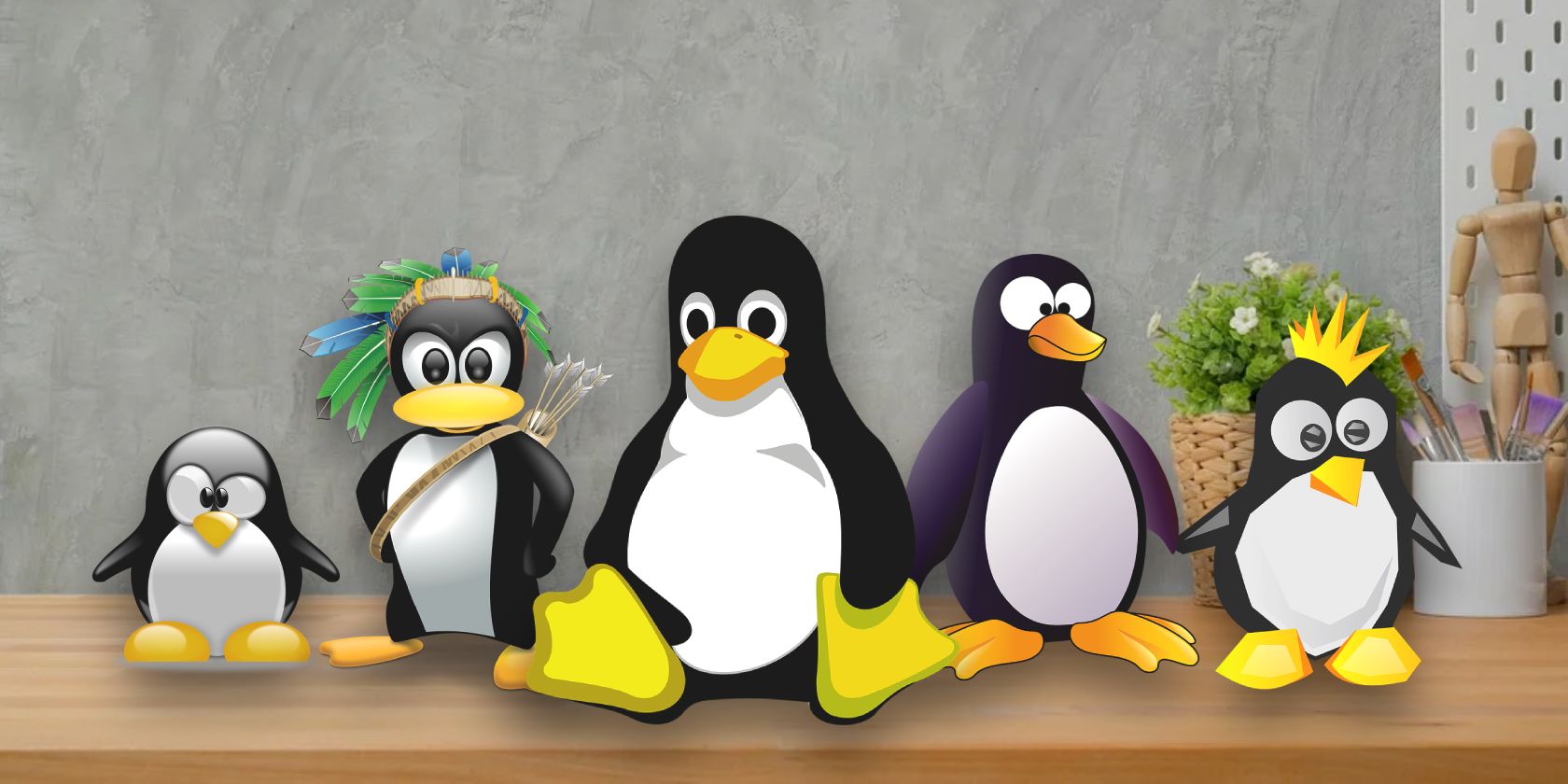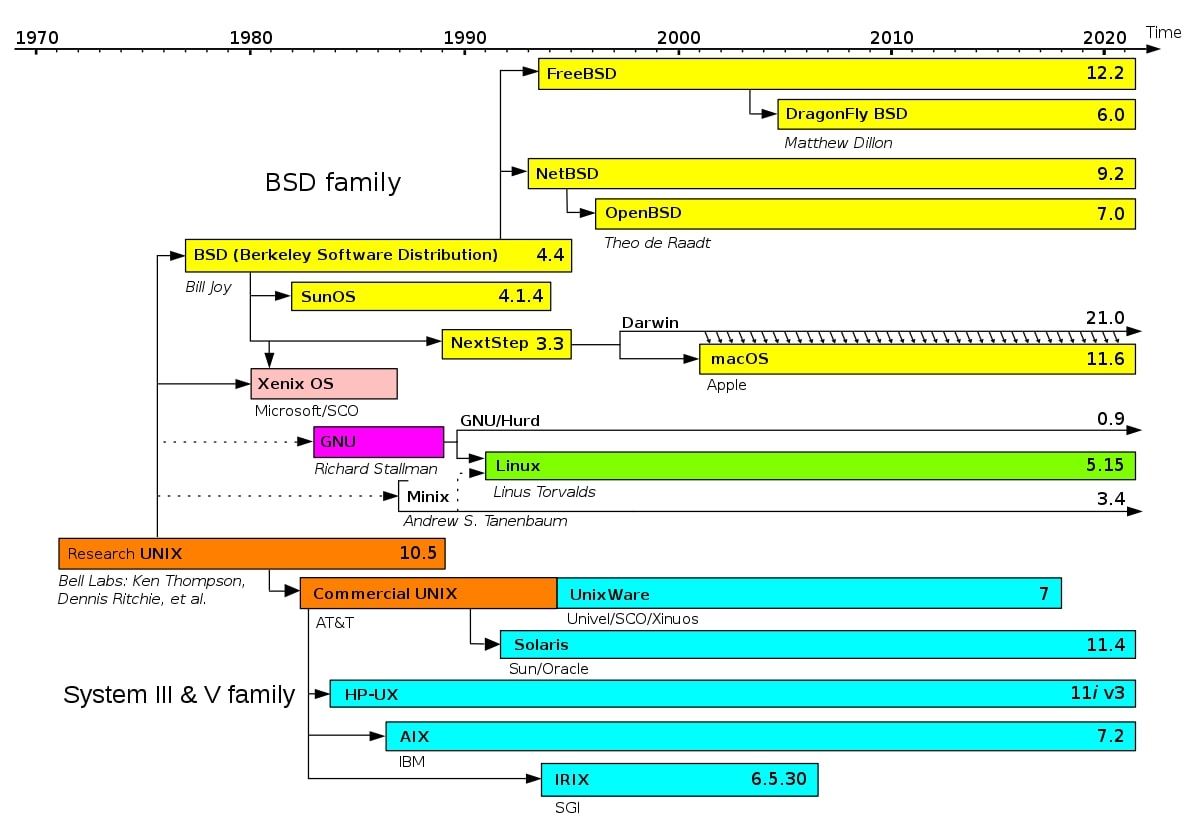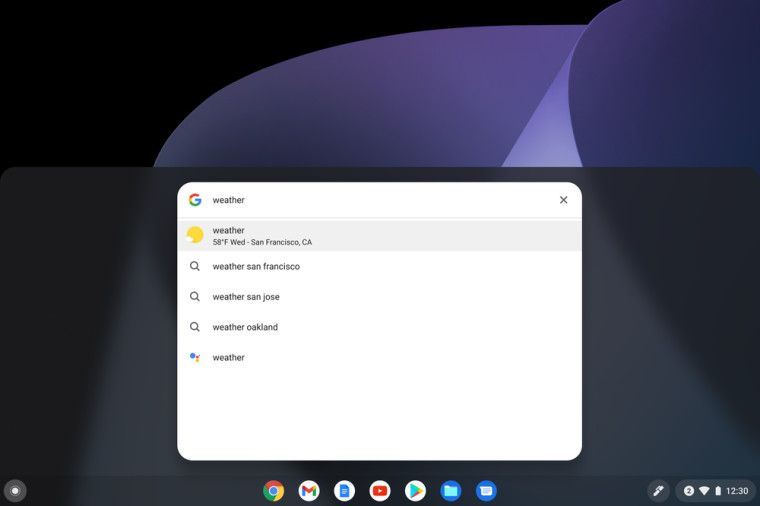Unlike Windows and macOS, installing Linux isn't so easy. Searching Linux on the internet will bring you so many operating systems with different names, none of them explicitly called "Linux." Why is this so?
Linux is increasingly becoming the operating system of choice for seasoned tech geeks and casual users alike. But why are there thousands of operating systems or "distributions" all referred to as "Linux"? And why do developers keep creating more operating systems of the same kind? Let's find out.
What Are Linux Distributions?
First, it is important to know what Linux actually is. Linux isn't an operating system but rather a kernel, the adhesive that connects your computer's hardware with the operating system. When you launch an app on your computer by clicking on an icon, it's the kernel that communicates with the operating system to launch the app and display the output on the screen using the hardware, i.e., the monitor.
An operating system consists of an underlying kernel, applications, and often a graphical user interface. Linux is the kernel, and all operating systems that use it are called "Linux distributions." The term "distribution" comes from the process of sharing Linux-based OSes with other users, also known as "distributing" since the kernel and the OS are generally free.
What Spawned So Many Linux Distros?
The Linux kernel is licensed under the GNU General Public License, which gives anyone permission to view, edit, and distribute any applications of the kernel. But it wasn't always like this.
Earlier, Unix was a popular operating system, but its source code was owned by AT&T. After some time, BSD (Berkeley Software Distribution), an operating system heavily based on Unix, originated at the University of California, Berkeley. There were other operating systems based on Unix at the time as well, and all of them were very different from each other.
The unavailability of a standard for creating a Unix-based OS and the resistance between the OSes at the time gave birth to an era known as the "Unix wars." Different vendors distributing their versions of Unix started setting up their own standards, including AT&T and BSD.
In 1983, Richard Stallman started the GNU Project, focusing on the development and distribution of free and open-source software. The GNU Project aimed to create a free version of Unix, a version that anyone could replicate and distribute freely.
Many apps were developed under GNU's General Public License at the time, including TAR and Emacs. But the project lacked an open-source kernel, the part of a computer that helps the OS and the apps interact with the hardware.
In 1991, eight years after the GNU Project started, Linus Torvalds started developing Linux. And a year later, Linux was re-released under the General Public License, becoming what we now know as GNU/Linux. As the Linux kernel was licensed under GPL, anyone could create an operating system on top of the kernel and distribute it freely.
The ability to spin up your own operating system for free encouraged many developers to start their distribution. A host of distros including Debian, Red Hat, and Slackware were released at the time, kickstarting the Linux revolution.
Why Are New Linux Distributions Created?
The main reason why developers keep creating and distributing new Linux-based OSes is that they simply can. The Linux kernel is free. The apps are free. The resources to create a whole operating system on top of the kernel are free.
Nowadays, people rarely create a distro from scratch. Instead, they take another popular distro and either build a new OS using the former one as a base or reskin it with a new graphical user interface and added applications.
Ubuntu has several reskins of itself, namely Xubuntu, Kubuntu, and Lubuntu. The only difference between these three flavors is the desktop environment. Instead of the default customized GNOME desktop that comes preinstalled on Ubuntu, Xubuntu, Kubuntu, and Lubuntu ship with XFCE, KDE Plasma, and LXDE, respectively.
The primary goal of an operating system is to make desktop computing easier for users. When someone wants a new feature in an operating system, the traditional route to go for is providing feedback to the company that develops the OS. The GNU Project has completely changed this flow.
It's the users who use, develop, provide feedback, implement feedback, and in the end, distribute an open-source distro. You're free to create your own distro and add the features you want in the OS of your dreams.
Anyone with a similar ideology and opinions can contribute to the project and start helping the developers. There's no need to contact a company or fill out a feedback form just to get an extra feature added to the OS.
Not only users, but even big companies create new in-house distributions for intracompany usage. Microsoft's CBL-Mariner is a popular example. This is primarily because big companies don't want to use distros created by other users and would rather develop their own operating system either from scratch or on top of another mainstream distro.
The Linux project has grown to an extent where tech giants like Google have started depending on the Linux kernel for some of their projects. Take Android and Chrome OS as an example. Android uses the Linux kernel under the hood and Chrome OS is built on top of Gentoo Linux, a distro released in 2000.
Another reason for desktop Linux's fragmentation is the numerous types of devices available. Apart from desktop computers, other devices like the ones based on ARM processors, also need an operating system to run. Linux solves this by providing a base to the developers to create an OS for any processor family they want.
Raspbian OS is a distro created specifically for Raspberry Pi devices. You can also find countless distros developed to run on older processors that are left unsupported by proprietary OS vendors.
Do We Really Need So Many Distributions?
If you're someone who simply needs a computer and an operating system to get things done, of course not. You can get away with using any operating system as long as it fits your bills. But for those who want to be spoilt for choices when it comes to their devices and digital life, Linux is the one to go for.
You can either try a couple of Linux OSes and settle with the one you find the best or keep distro-hopping and testing new distros. Linux gives you that choice. As long as people keep supporting and contributing to the open-source ecosystem, you'll keep seeing new distros being developed and released for free on the internet.
That’s How Open-Source Works!
Even though many proprietary OSes like Android and macOS have a closed-source codebase, they've used Linux as a foundation for their projects. It is completely acceptable since the license the Linux kernel is released under allows anyone to modify and distribute the code with no restrictions.
Due to the enormous community support behind Linux-based operating systems, new and exclusive features are continuously added to the distros. Although you can find many such features on other proprietary OSes like Windows and macOS, some of them are limited to only a handful of Linux distributions.




